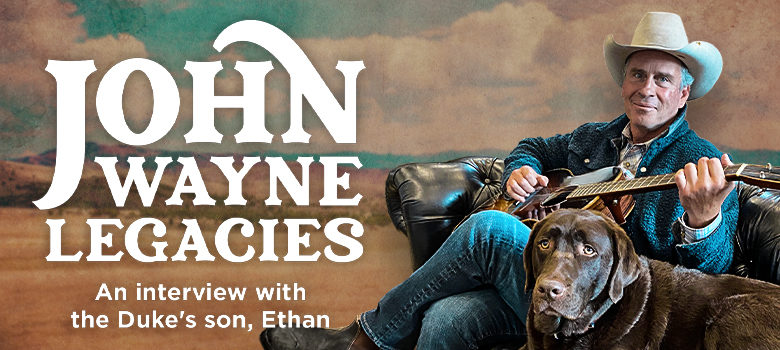John Wayne, Meet John Ford

Through a variety of connections, the now aspiring actor got a job at a movie studio, but not as an actor—as a prop boy, where he was able to observe first-hand the work of renowned director, John Ford, with whom he would later become friends, and work with on Stagecoach, Fort Apache, Rio Grande, She Wore a Yellow Ribbon, and The Man Who Shot Liberty Valance. The prop boy watched and learned from director Raoul Walsh, who would later cast him in his first leading role in The Big Trail, and is often credited with helping create the now famous screen name, John Wayne. To the young prop boy, even the smallest job was an opportunity, even when his first time on camera was less than noteworthy.
“When he is [first] put on screen, he’s uncomfortable, he sounds funny…he was mortified by the way he walked, by the way he talked, the way he looked, so he immediately went to work,” Ethan says, “He was around Harry Carey, Sr. and Yakima Canutt, and was influenced by Wyatt Earp.”
Throughout his career, John Wayne perfected his iconic “firm but fair” persona, his distinctive walk, his “talk less and say more” attitude and his “Do your best, and finish what you start” work ethic, embodying many of the Cowboy Code principles on screen and in real life.
The characters he portrayed spanned the spectrum of humanity. He played lawmen and outlaws, soldiers and historical figures, ranchers, trailblazers, and tough men with soft hearts—and he even showcased his flair for humor in films like McLintock!, as well as playing himself in an ill-fated encounter with Lucy Carmichael, played by Lucille Ball in a 1966 episode of The Lucy Show.
“Each film brought some adventure, brought some magnificent scenery, brought you a strong character, [who] was also fair. He was an aspirational character. I think there were a lot of qualities in the John Wayne characters that people liked. They wanted to be like him,” Ethan says, “I remember as a young boy…that he relished where his films had ended up. And the way they delivered entertainment to the public.”
 |
 |



